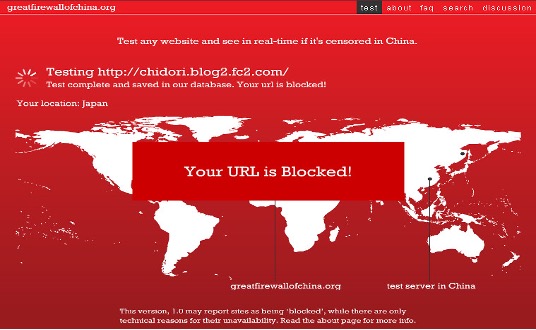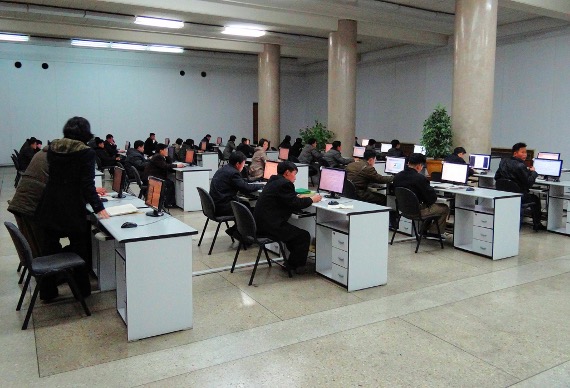Splintering Cyberspace: How National Borders Shape Our Digital World
The Internet has been praised from its inception as a borderless space — the ultimate global village that promised to unite the world. It was envisioned as a means of bringing societies closer together by bridging national and cultural boundaries. However, as we progress further into the digital age, a new reality emerges. The internet is fragmented, and digital borders mimic national ones therefore giving rise to what is known as the “Splinternet”.

Figure 1: Great Firewall of China, by Ishikawa, 2007 (https://live.staticflickr.com/1222/536813392_e30b04a24a_c.jpg)
“China’s “Great Firewall,” Russia’s “sovereign Internet,” and Australia’s stringent digital content regulations are just the tip of the iceberg. These nations offer glimpses into a future where the Internet is no longer a single unified entity but a collection of regional digital zones.
Understanding the Splinternet
The “Splinternet” encapsulates this transformation. It represents the shift from a globally connected cyberspace to one defined and divided by national and regional borders. This paper seeks to elucidate this transition by contrasting the once-unified Internet landscape with its increasingly fragmented counterpart.
The utopian vision of a cohesive, global Internet is waning. Factors such as religious beliefs, political agendas, governmental decisions, and national interests are driving this change. Notable examples include Russia restricting access to platforms like Facebook and Twitter amidst geopolitical tensions and China shaping its digital domain through the Great Firewall, part of the Golden Shield Project (Lemley, 2021). Countries like Australia, North Korea, and Iran are also crafting their versions of the Splinternet, further emphasizing the trend.
Such digital segregations are not born out of whim but are rooted deeper. As a result, the once-unfettered digital landscape is becoming a patchwork of regulated zones, each with its own rules and power dynamics. This new digital order can foster misinformation, heighten global divides, and fundamentally alter our online experiences.
China: Crafting a Unique Digital Landscape
Among the nations shaping their digital destinies, China stands as a paramount example. Visitors to Beijing often encounter a digital realm where Facebook and Google are notably absent due to China’s defining Great Firewall (Wu et al., 2023). To perceive China’s digital landscape merely through the lens of restricted access would be an oversight. The nation does not block, but instead it builds. Western tech giants like Google have their equivalents in China—Baidu as China’s premier search engine, and while Twitter dominates the global stage, China has Weibo.

Figure 2: Sina Weibo, by Russell, 2012 (https://live.staticflickr.com/7201/6993649975_13fedf8866_h.jpg)
More profoundly, China’s claim of digital strategy is said to be not about control or competition but a vision that prioritizes an online environment aligned with its national ethos. Their objective is a harmonious digital sphere that upholds safety and reflects the nation’s values. Those keen on understanding the foundational philosophy could examine China’s cybersecurity laws and policy directives.
Australia: Balancing Openness with Regulation
While countries like China forge distinct digital pathways, Australia offers a contrasting landscape that seeks to harmonize digital freedom with stringent oversight.
- Anti-Encryption Laws: Central to Australia’s digital policy is the Telecommunications and Other Legislation Amendment (Assistance and Access) Act 2018, a.k.a. the ‘Anti-Encryption’ legislation. This act emerges from global discourse on the intricacies and implications of encrypted communications. Its advocates are in pressing need of law enforcement to access encrypted information for national security. However, skeptics underscore potential pitfalls, fearing the inadvertent creation of encryption backdoors that malevolent actors might exploit. For a nuanced perspective, consider perusing the analysis in “Decrypting Australia’s ‘Anti-Encryption’ legislation.” (Davis, 2022). While it acknowledges the legislation’s efforts to avoid explicit encryption backdoors, it also highlights persisting cybersecurity apprehensions.
- Media Bargaining Code: In a pioneering move, Australia proposed that tech behemoths compensate news publishers, sending ripples across the digital world. When Facebook temporarily banned Australian news links, it reflected the platform’s reservations about the new directive. Facebook’s William Easton elucidated the company’s predicament, caught between adapting to the new regulations or axing news services in Australia. Contrarily, Google chose negotiation by inking payment agreements with leading Australian media houses, including News Corp.
- Cybersecurity Initiatives: Australia’s digital strategy isn’t just legislative combat with tech giants; it’s also a forward-looking endeavor to bolster its cyber defenses. The unveiling of the 2023-2030 Australian Cyber Security Strategy epitomizes this commitment. Spurred by significant cyber episodes—like the digital fallout of the Russia-Ukraine conflict and high-profile data breaches at Optus and Medibank—Australia’s refreshed strategy assimilates lessons from past experiences.

Figure 3: Stand with Ukraine against Russian Invasion – Vancouver Anti-War Rally, Feb 26th, 2022, by GoToVan, 2022
(https://flickr.com/photos/47022937@N03/51906093623)
A Global Trend: Diverse Approaches to Digital Sovereignty
While China and Australia paint vivid images of digital redefinition in their respective territories, the phenomenon of the Splinternet is indeed a global one. Countries with their socio-political fabric are charting unique courses in the digital realm and pivoting between free access, stringent control, and security considerations.
- Russia: The adoption of Russia’s “Sovereign Internet Law” signals a major shift toward state-centric administration of the country’s digital domain. The implications of the legal framework extend beyond local platforms, including multinational firms operating within Russian borders (Epifanova, 2020). Aside from the obvious goal of developing an indigenous Domain Name System (DNS), there is a looming objective of increased monitoring and information manipulation.
- India: Contrary to Russia’s centralized approach, India’s strategy hinges on strategic exclusion. An academic discourse suggests India’s gradual tilt towards a Splinternet model, stirred by external cyber threats, sovereignty concerns, and an amplified security focus (Dhurwey et al., 2022). The trajectory is evidenced by actions like the ban on certain Chinese apps, fervent calls for data localization, and solicitations to VPN providers. As India’s digital blueprint unfolds, developments like an Indian-centric domain system (IDNS) and bespoke encrypted protocols could further consolidate its distinct digital identity.
- European Union: The EU’s GDPR is not merely a regional mandate; it extends globally, reaching any entity processing or targeting the data of EU citizens. Enforcing stringent data protection norms, GDPR becomes emblematic of how regional directives can dissect the unified global digital landscape. The regulation, with its cross-border implications, demands global compliance, making multinationals navigate a labyrinth of regional digital rules.
- Iran: Iran’s digital journey encapsulates a transition—from initially embracing the internet’s academic and religious potentials to subsequently curbing its expanse. Significant geopolitical events like the 2003 Iraq invasion and the 2009 Green Movement exacerbated the clampdown. Yet, while globally used platforms face bans domestically, Iranian leaders paradoxically employ them for global messaging (Brooking & Kianpour, 2020). The duality in Iran’s approach—simultaneous adoption and suppression—reiterates the nation’s leanings towards a splinternet, as exemplified by the National Internet Project.
- North Korea: North Korea offers a restricted digital experience. While the global narrative champions internet access as an inherent right, in North Korea, it remains a privilege, meticulously curated and rigorously supervised. The country’s digital seclusion serves as a stark reminder of the splinternet’s extreme manifestation, emphasizing the urgency for global digital inclusivity.

Figure 4: A computer room in Pyongyang, with access to the North Korean intranet. By Tørrissen, 2014 (https://upload.wikimedia.org/wikipedia/commons/thumb/d/df/Grand-Peoples-Study-House-Computer-Lab.jpg/800px-Grand-Peoples-Study-House-Computer-Lab.jpg?20140430215318)
Implications of a Splinternet Future
The emergence of the Splinternet hints at a profound transformation (Perarnaud et al., 2022), and its reverberations span various facets of our global existence.
- Economically, the divergent digital pathways might muddle the waters for trade and commerce. Businesses might encounter impediments, potentially dimming the spark of innovation and stunting growth.
- From a social vantage, the Splinternet might cast shadows on the free flow of global conversations. This curtailed communication might sow seeds of misunderstandings, eroding the bridges of cross-cultural exchanges that our digital age has so fervently built.
- Politically, the vistas of a disjointed digital domain loom large. The complexities of such a realm can exacerbate diplomatic tensions, with nations cocooned in their unique digital enclosures. This might convolute joint endeavors and shared visions, making international collaboration an intricate dance.
Indeed, the ripples of the Splinternet could reshape the very essence of our digitally intertwined global society and leave indelible marks on our economic pursuits, social dialogues, and political alignments.
Conclusion
The underpinnings of the Splinternet, although rooted in notions of national pride and safeguarding, may unwittingly orchestrate a digital symphony where harmonious unity seems like a distant dream. The specter of this fragmented future portends restricted information avenues, curtailed innovation prospects, and potential breaches of individual privacy. As the contours of our digital space begin to mirror our geopolitical fault lines, the onus falls upon the global community. To navigate this brave new world, concerted international dialogues and holistic strategies are imperative to rekindle the spirit of a cohesive digital universe.
#Splinternet #Digital Sovereignty #National Digital Regulations #Global Internet Fragmentation #Cybersecurity & Legislation #International Digital Policy
References
Brooking, E. T., & Kianpour, S. (2020). Iran and the internet. In Iranian digital influence efforts: Guerrilla broadcasting for the twenty-first century (pp. 11–14). JSTOR Open Access. https://www.jstor.org/stable/resrep24668.6
Davis, P. A. E. (2022). Decrypting Australia’s ‘Anti-Encryption’ legislation: The meaning and effect of the ‘systemic weakness’ limitation. Computer Law & Security Review, 44, 105659. https://doi.org/10.1016/j.clsr.2022.105659
Department of Home Affairs, Australia. (2022). 2023-2030 Australian cyber security strategy. https://www.homeaffairs.gov.au/reports-and-pubs/files/2023-2030_australian_cyber_security_strategy_discussion_paper.pdf?trk=public_post_comment-text
Dhurwey, S., Kispotta, S., Nagayach, S., Khare, V., Richhariya, S., & Sharma, I. (2022). An analysis on impact of Splinternet in India. International Journal of Recent Development in Engineering and Technology, 11(6). https://www.ijrdet.com/files/Volume11Issue6/IJRDET_0622_02.pdf
Epifanova, A. (2020). Deciphering Russia’s “Sovereign Internet Law”: Tightening Control and Accelerating the Splinternet. (DGAP Analysis, 2). Berlin: Forschungsinstitut der Deutschen Gesellschaft für Auswärtige Politik e.V.. https://nbn-resolving.org/urn:nbn:de:0168-ssoar-66221-8
Lemley, M. A. (2021). The Splinternet. Duke Law Journal, 70(6), 1397-1427. https://scholarship.law.duke.edu/dlj/vol70/iss6/3
Perarnaud, C., Rossi, J., Musiani, F., & Castex, L. (2022). ‘Splinternets’: Addressing the renewed debate on internet fragmentation (Doctoral dissertation, Parlement Européen; Panel for the Future of Science and Technology. (STOA)). https://www.europarl.europa.eu/RegData/etudes/STUD/2022/729530/EPRS_STU(2022)729530_EN.pdf
Wu, M., Sippe, J., Sivakumar, D., Burg, J., Anderson, P., Wang, X., Bock, K., Houmansadr, A., Levin, D., & Wustrow, E. (2023). How the Great Firewall of China detects and blocks fully encrypted traffic. 32nd USENIX Security Symposium (USENIX Security 23). https://www.usenix.org/conference/usenixsecurity23/presentation/wu-mingshi
